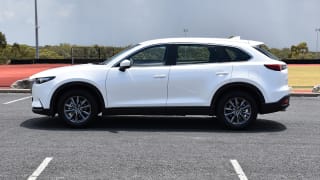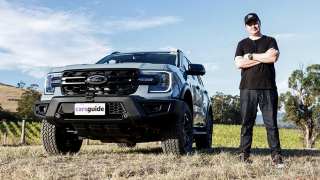Ask and you will receive. It sounds simple, but it certainly doesn’t always happen.
When the Mazda CX-8 first arrived in Australia in mid-2018, it seemed like the ultimate Goldilocks option to sit right between the massively popular CX-5 and the luxuriantly large CX-9.
It kept the 9’s seven seats but wrapped them in the narrower 5’s width and whittled down the overall length just a smidge.
But given the CX-8 was developed with only diesel-loving Japan in mind, there was no petrol engine in sight at the time. This kept the starting price $2490 on the wrong side of $40,000, which is a hot price threshold for many Australian families.
Read More: Mazda CX-8 2020 review: Sport petrol
After driving the diesel CX-8 Sport and Asaki at its Australian media launch, I found the much cheaper Sport to be the pick of the two, and could only be made better with the availability of a petrol engine at a lower entry price. I presumed the CX-9’s turbocharged 2.5-litre would be the most likely candidate at the time, but Mazda went a step further with the price trimming and added the non-turbo 2.5 we know from the CX-5 in February. The result is actually within $250 of the equivalent CX-5, which admittedly also gets all-wheel drive.
Given that its $39,910 list price makes seven-seat Mazda motoring that much more accessible for Australian families, and it puts yet another twist on the CX-8’s CX-5/CX-9 Goldilocks formula, we’re putting it to the Flynn family test for six months.
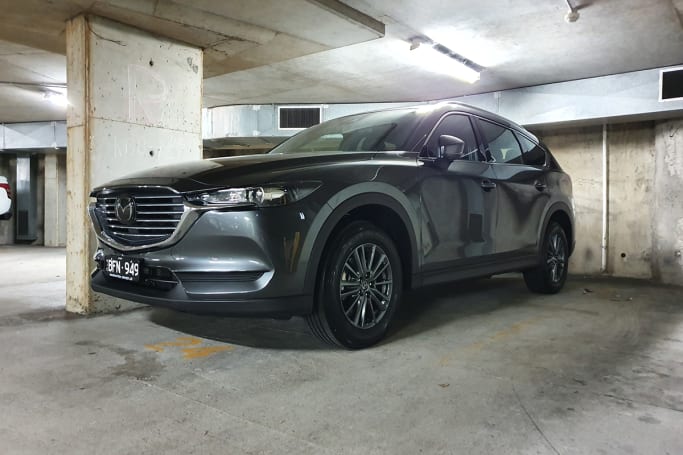
Will we miss the extra size of the CX-9 Azami we tested last year? How much more petrol does it use than the CX-5 Touring we tested with the same engine the year prior? And how well does it stack up against the (link to each piece) Tiguan 132 TSI, Escape Trend, CR-V VTi-S, Golf R wagon, Santa Fe Elite, Carnival Platinum and Acadia LTZ we’ve lived with in the past? Stay tuned.
The petrol CX-8 Sport’s arrival on the market was actually timed almost perfectly with the early end of our Acadia LTZ long term loan due to the demise of the Holden brand. I say almost because there was a week before the CX-8 was available, and the good folks at Mazda Australia were kind enough to fill that gap with a CX-9 Azami. Or in other words, the perfect platform to see how much the CX-9’s extra size and Azami creature comforts matter to my family.
Externally, the CX-8 is 129mm narrower and 175mm shorter overall over the same long wheelbase as the CX-9, but the key measurements for my family relate to the width of the second row and the size of the boot area.
According to my measuring tape, the CX-8 second row is 100mm narrower at 1380mm, with the same 500mm between ISOFIX points for the middle occupant. That doesn’t translate to 500mm of actual room when two child seats are in the outboard positions, but it’s no less than the CX-9 and therefore able to fit a slim Grandma at a pinch.
The CX-9’s extra 100mm of overall width would be handy when it comes to squeezing in an extra child seat in the middle, but we’ll be finding out just how well the CX-8 copes with this scenario when baby #3 is due in July. Watch this space, literally.
In the meantime, our two forward-facing 0-4 child seats clicked and strapped into place in the outboard positions with no dramas using the two sets of ISOFIX points combined with the top tethers.
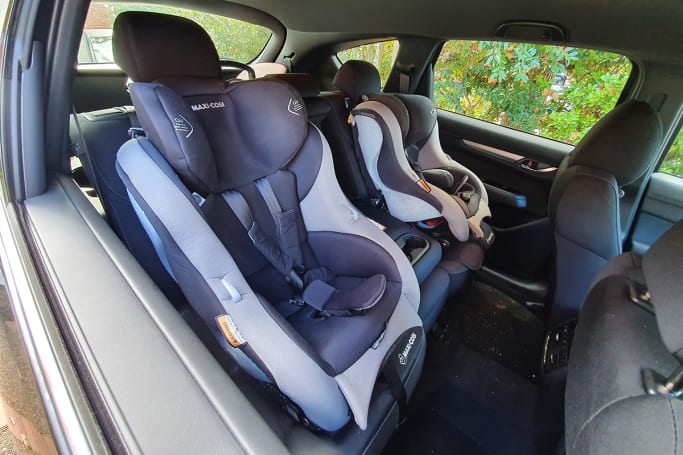
One other very interesting point is how much wider the CX-8’s back doors open than the CX-9. Mazda boasts a full 80 degrees for the CX-8, which can be pretty handy when you’re loading something as large as a toddler.
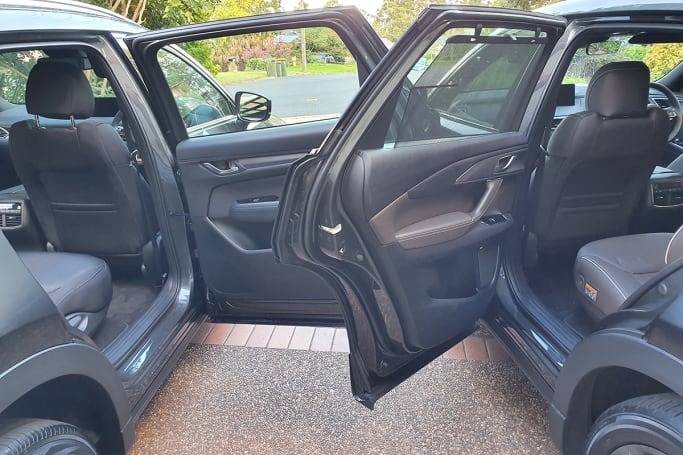
The difference in boot size is another interesting situation, with the CX-8’s official figures just 21 litres VDA smaller with the third row upright, and 35 litres VDA smaller with the third row folded flat.
In more relatable terms, my tape measure shows a boot floor length just 60mm shorter at 1220mm, with the same 1020mm width between the wheelarches. No matter how you look at it, there’s not much in it, and most of the CX-9’s extra body length is ahead of the windscreen.
Thankfully, the CX-8 also gets the CX-9’s sliding second row so you can increase boot floor length if less second row legroom is needed - as is the case with my two toddlers. I had it pushed all the way back when I took the above measurements.
Impressively, the CX-8 also matches the CX-9 in having it’s ‘40’ section of the second row split fold on the passenger side, meaning the third row can be accessed from the kerb side with minimal disruption. This is not the case for many seven seaters, including the Acadia.
As usual, this means little for my family given we don’t need the extra seats and always have a child seat mounted in this (safest) position, but it’s worth noting that the access gap with the seat fitted will limit the third row to smaller children.

The petrol CX-8 Sport’s fuel consumption was always going to be an interesting detail, given it weighs 141kg more than the mechanically identical CX-5 Touring (albeit missing AWD mechanicals) we’ve lived with, and 168kg lighter than the turbocharged CX-9 Azami LE we tested more recently. The CX-5 returned an overall average L/100km of 8.9 and the bigger and more powerful CX-9 tallied 10.56. So the CX-8 Sport should fit somewhere between them, despite carrying an official combined figure of 8.1L/100km. Note that like the others, the CX-8 petrol only needs cheaper 91 RON unleaded to do it best.
Our CX-8 Sport arrived with 1035km showing on the odometer, and like the rest of the world, we’ve cut back our driving a whole lot. We still managed 676km though largely thanks to one final trip to a remote beach before the weather gets too cold, and running across town to take Grandma to doctor’s appointments.
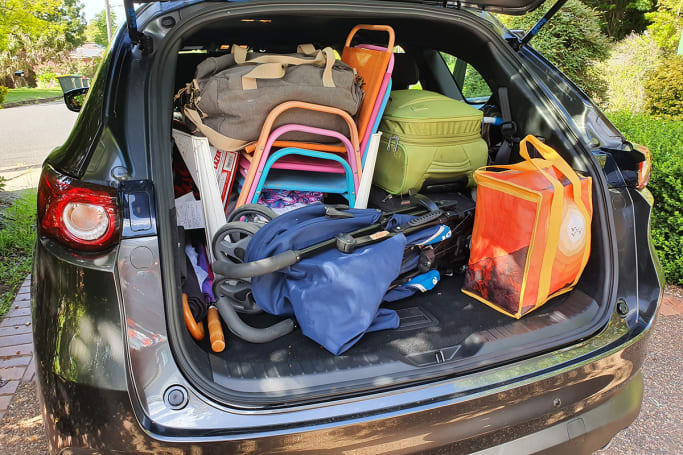
This gave us an average fuel consumption of 9.57L/100 for the month, which is bang on expectation, and only required one visit to the servo at the very end of the month due to the large 72-litre fuel tank.
Acquired: March 2020
Distance travelled so far: 676km
Odometer: 1711km
Average fuel consumption this month: 9.57L/100km (measured at the pump)



















